Content and Privacy Protection in JPEG Images by Reversible Visual Transformation
Abstract
:1. Introduction
2. Related Work
3. Proposed Algorithm for Content Protection in JPEG Images
3.1. Generating the Visually Transformed JPEG Images
3.1.1. Key Generation
3.1.2. User Interaction to Select the Regions to Be Protected
3.1.3. Modifying the DC Coefficients
3.1.4. Permutation of the Selected Blocks
3.1.5. Hiding Location Information in the Transformed Image
3.2. Recovering the Original JPEG Images
3.2.1. Extracting Location Information
3.2.2. Recovering the AC Coefficients
3.2.3. Recovering the Modified DC Coefficients
4. Experimental Results
4.1. Visual Effects, Image Quality and Reversibility
4.2. Change of JPEG Image Size
4.3. Security Analysis
5. Concluding Remarks
Author Contributions
Funding
Conflicts of Interest
References
- Wallace, G.K. The JPEG still picture compression standard. IEEE Trans. Consum. Electron. 1992, 38, xviii–xxxiv. [Google Scholar] [CrossRef]
- Norcen, R.; Uhl, A. Selective encryption of the JPEG2000 Bitstream. In Proceedings of the Communications and Multimedia Security, Advanced Techniques for Network and Data Protection, CMS2003, LNCS, Torino, Italy, 2–3 October 2003; pp. 194–204. [Google Scholar]
- Korshunov, P.; Ebrahimi, T. Using face morphing to protect privacy. In Proceedings of the 2013 10th IEEE International Conference on Advanced Video and Signal Based Surveillance, Krakow, Poland, 27–30 August 2013; pp. 208–213. [Google Scholar]
- Korshunov, P.; Ebrahimi, T. Using warping for privacy protection in video surveillance. In Proceedings of the 2013 18th International Conference on Digital Signal Processing, Fira, Greece, 1–3 July 2013; pp. 1–6. [Google Scholar]
- Ong, S.Y.; Wong, K.S.; Tanaka, K. Scrambling–embedding for JPEG compressed image. Signal Process. 2015, 109, 38–53. [Google Scholar] [CrossRef]
- Yuan, L.; Ebrahimi, T. Image transmorphing with JPEG. In Proceedings of the 2015 IEEE International Conference on Image Processing (ICIP), Quebec City, QC, Canada, 27–30 September 2015; pp. 3956–3960. [Google Scholar]
- Li, W.; Ni, R.; Zhao, Y. JPEG photo privacy-preserving algorithm based on sparse representation and data hiding. In International Conference on Image and Graphics; Springer: Berlin/Heidelberg, Germany, 2017; pp. 575–586. [Google Scholar]
- Ma, X.; Yang, L.T.; Xiang, Y.; Zeng, W.; Jin, H. Fully reversible privacy region protection for cloud video surveillance. IEEE Trans. Cloud Comput. 2017, 5, 510–522. [Google Scholar] [CrossRef]
- Joshi, V.B.; Raval, M.S.; Kuribayashi, M. Reversible data hiding based compressible privacy preserving system for color image. Multimed. Tools Appl. 2018, 77, 16597–16622. [Google Scholar] [CrossRef]
- Niimi, M.; Masutani, F.; Noda, H. Protection of privacy in JPEG files using reversible information hiding. In Proceedings of the 2012 International Symposium on Intelligent Signal Processing and Communications Systems, Taipei, Taiwan, 4–7 November 2012; pp. 441–446. [Google Scholar]
- Ra, M.-R.; Govindan, R.; Ortega, A. P3: Toward privacy-preserving photo sharing. In Proceedings of the 10th USENIX Symposium on Networked Systems Design and Implementation, Lombard, IL, USA, 2–5 April 2013; pp. 515–528. [Google Scholar]
- Yuan, L.; Korshunov, P.; Ebrahimi, T. Secure JPEG scrambling enabling privacy in photo sharing. In Proceedings of the 2015 11th IEEE International Conference and Workshops on Automatic Face and Gesture Recognition, Ljubljana, Slovenia, 4–8 May 2015; pp. 1–6. [Google Scholar]
- Ruchaud, N.; Dugelay, J.L. JPEG-based scalable privacy protection and image data utility preservation. IET Signal Process. 2018, 12, 881–887. [Google Scholar] [CrossRef]
- Coltuc, D. Improved capacity reversible watermarking. In Proceedings of the 2007 IEEE International Conference on Image Processing, San Antonio, TX, USA, 16 September–19 October 2007; pp. 249–252. [Google Scholar]
- Huang, F.; Qu, X.; Kim, H.J.; Huang, J. Reversible data hiding in JPEG images. IEEE Trans. Circuits Syst. Video Technol. 2016, 26, 1610–1621. [Google Scholar] [CrossRef]
- Wu, H.; Tang, H.; Wang, J. A reversible visual transformation algorithm for JPEG images. J. South China Univ. Technol. (Nat. Sci. Ed.) 2018, 46, 16–21. [Google Scholar]
- Daemen, J.; Rijmen, V. The Design of Rijndael: AES—The Advanced Encryption Standard; Springer: Berlin/Heidelberg, Germany, 2002. [Google Scholar]
- Ciftci, S.; Akyuz, A.O.; Ebrahimi, T. A reliable and reversible image privacy protection based on false colors. IEEE Trans. Multimed. 2017. [Google Scholar] [CrossRef]
- Westfeld, A. F5—A steganographic algorithm: High capacity despite better steganalysis. In Proceedings of the International Workshop on Information Hiding, Pittsburgh, PA, USA, 25–27 April 2001. [Google Scholar] [CrossRef]
- Wu, H.; Huang, J. Secure JPEG steganography by LSB+ matching and multi-band embedding. In Proceedings of the 2011 18th IEEE International Conference on Image Processing, Brussels, Belgium, 11–14 September 2011; pp. 2737–2740. [Google Scholar]
- Rivest, R.L. The MD5 Message-Digest Algorithm; RFC Editor; MIT Laboratory for Computer Scienceand RSA Data Security, Inc.: Cambridge, MA, USA, 1992. [Google Scholar]
- Brute Force, Wikipedia. Available online: http://en.wikipedia.org/wiki/Brute_force_attack (accessed on 22 September 2020).
- Hou, D.; Zhang, W.; Yu, N. Image camouflage by reversible image transformation. J. Vis. Commun. Image Represent. 2016, 40, 225–236. [Google Scholar] [CrossRef]
- Wang, K.; Lu, Z.; Hu, Y. A high capacity lossless data hiding scheme for JPEG images. J. Syst. Softw. 2013. [Google Scholar] [CrossRef]
- Gallagher, A.; Chen, T. Understanding groups of images of people. In Proceedings of the IEEE Conference on Computer Vision and Pattern Recognition, Miami, FL, USA, 20–25 June 2009; pp. 256–263. [Google Scholar]

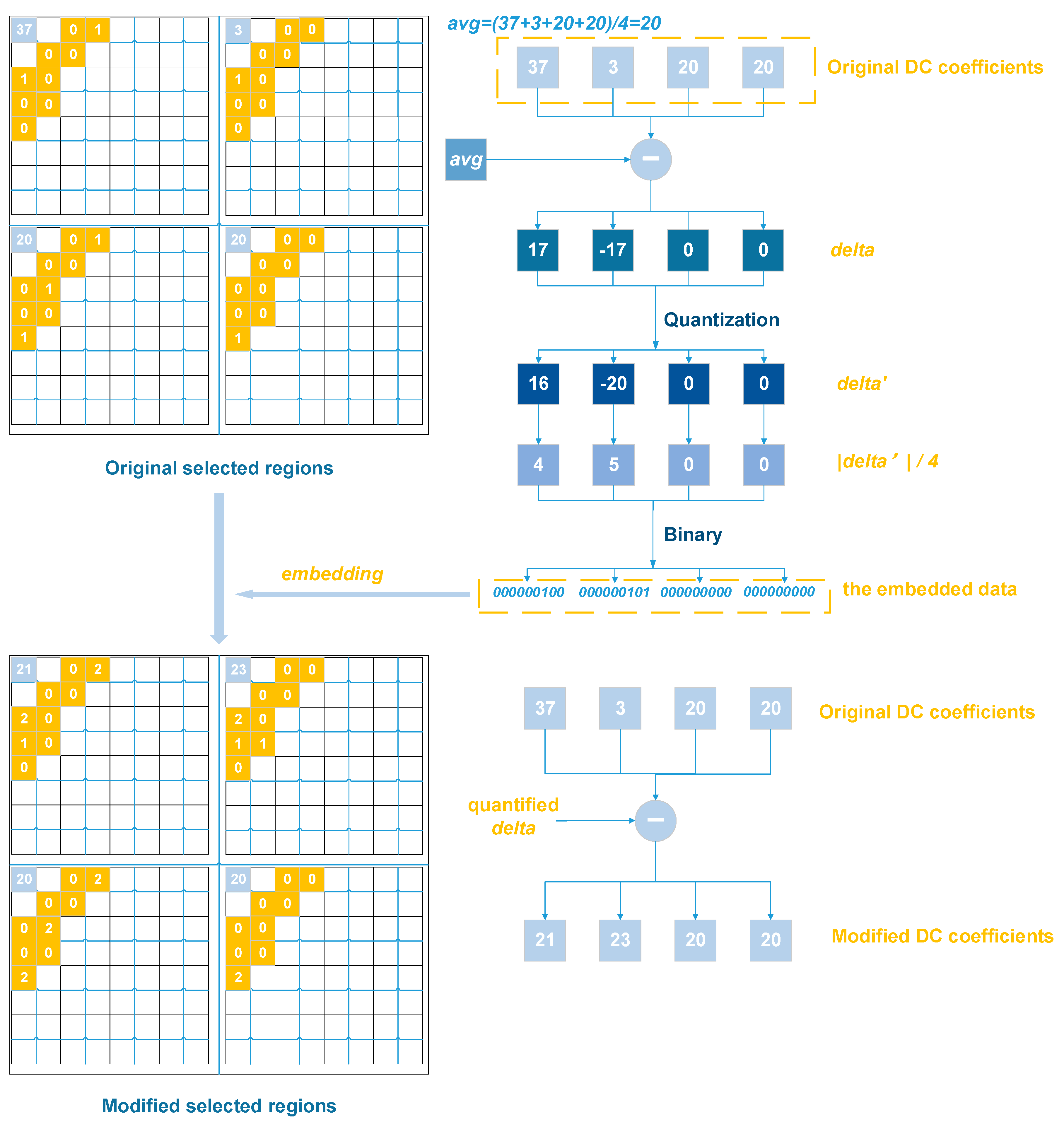
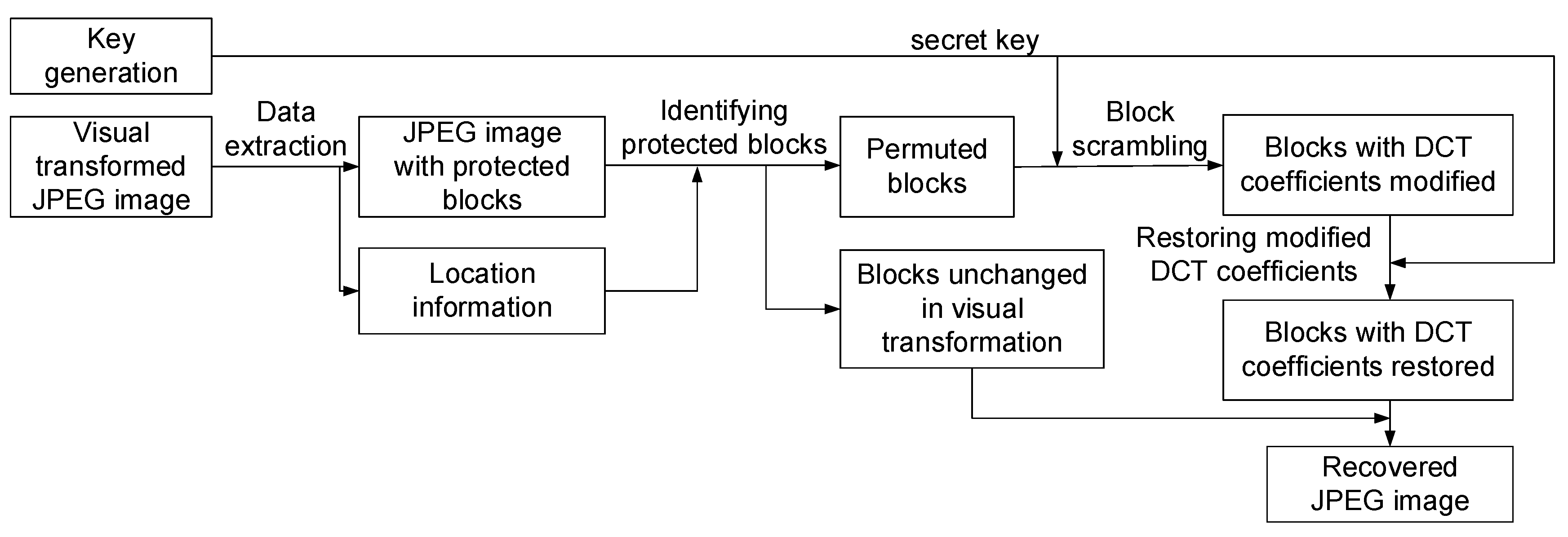
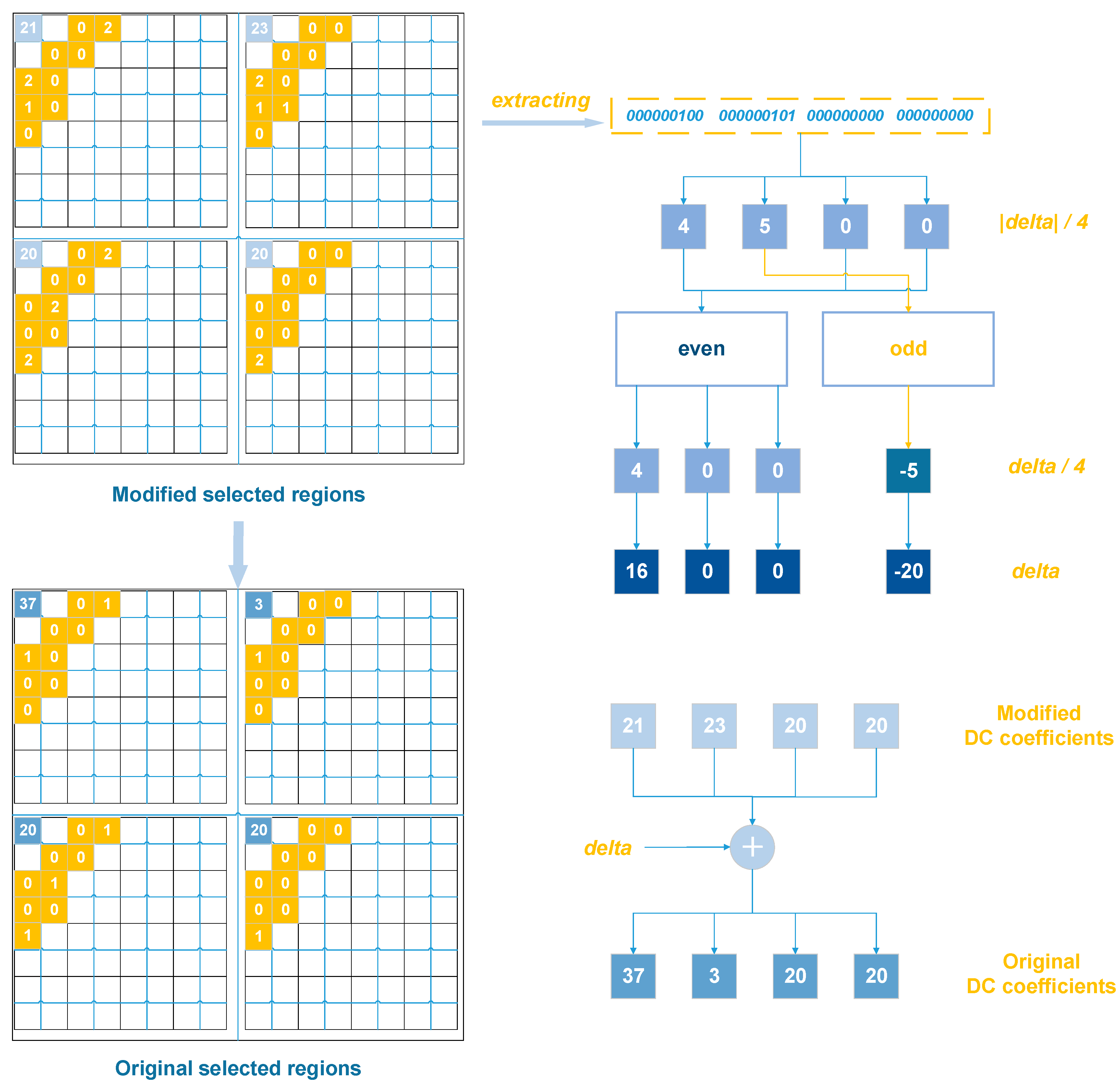
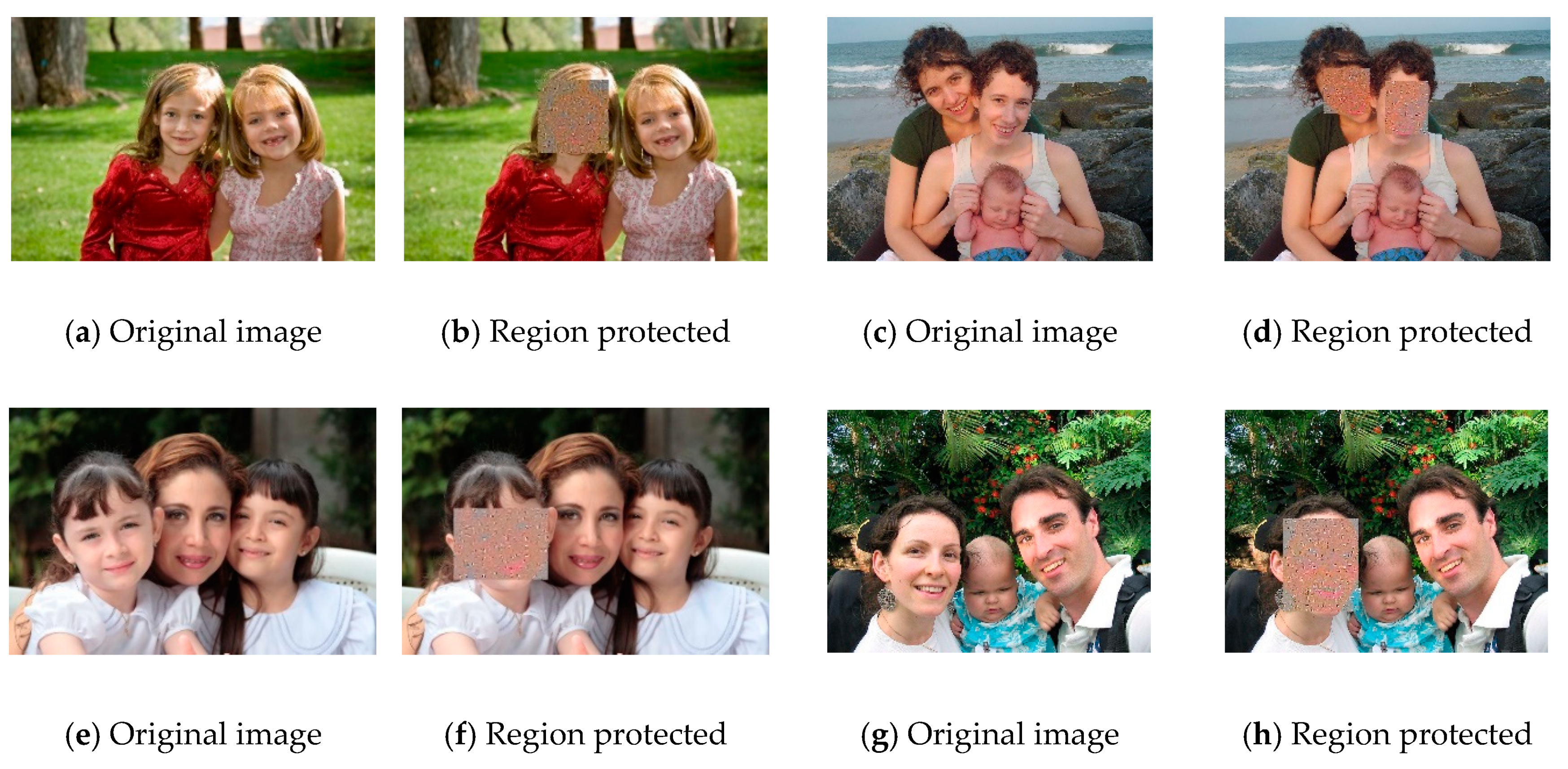
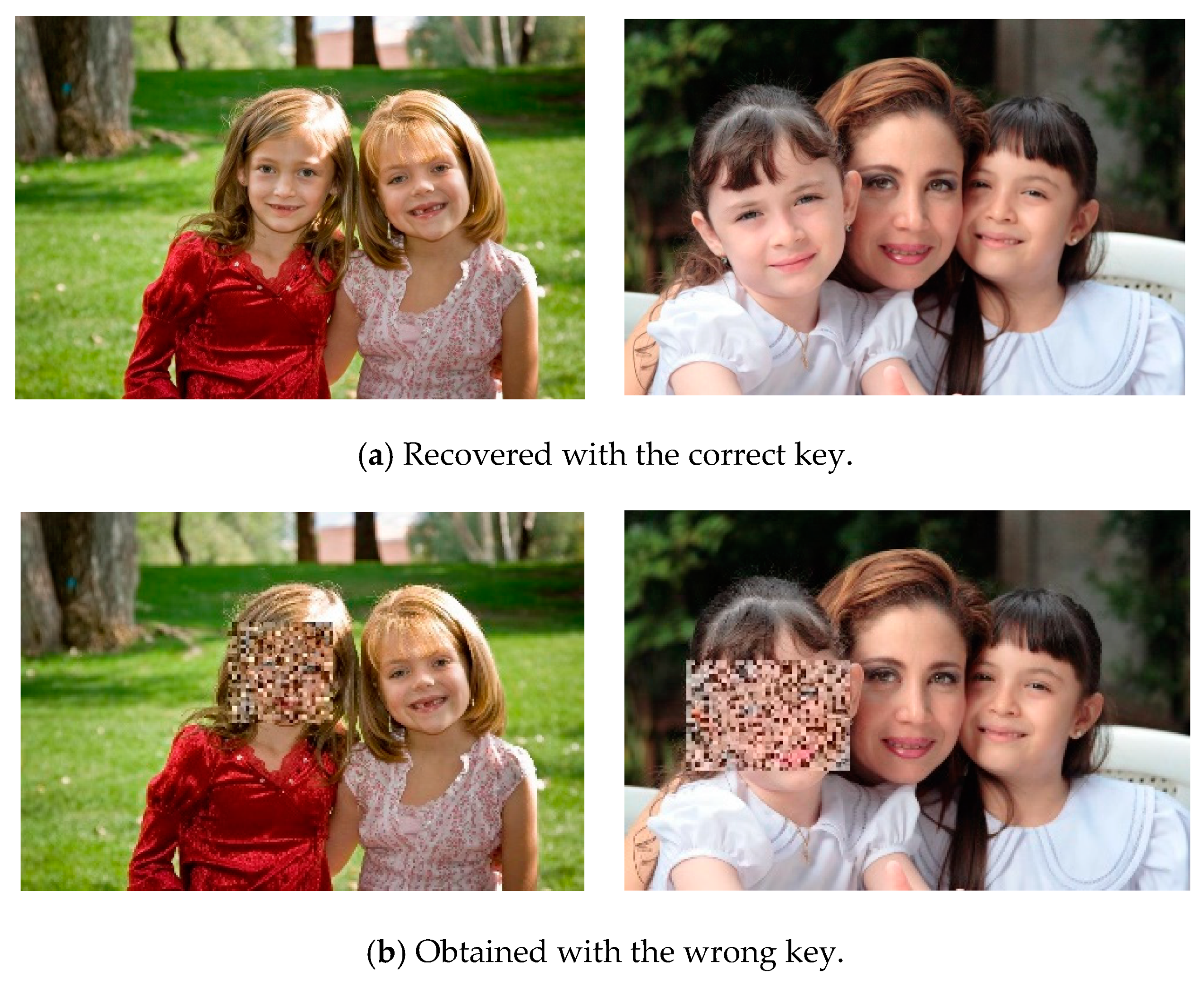
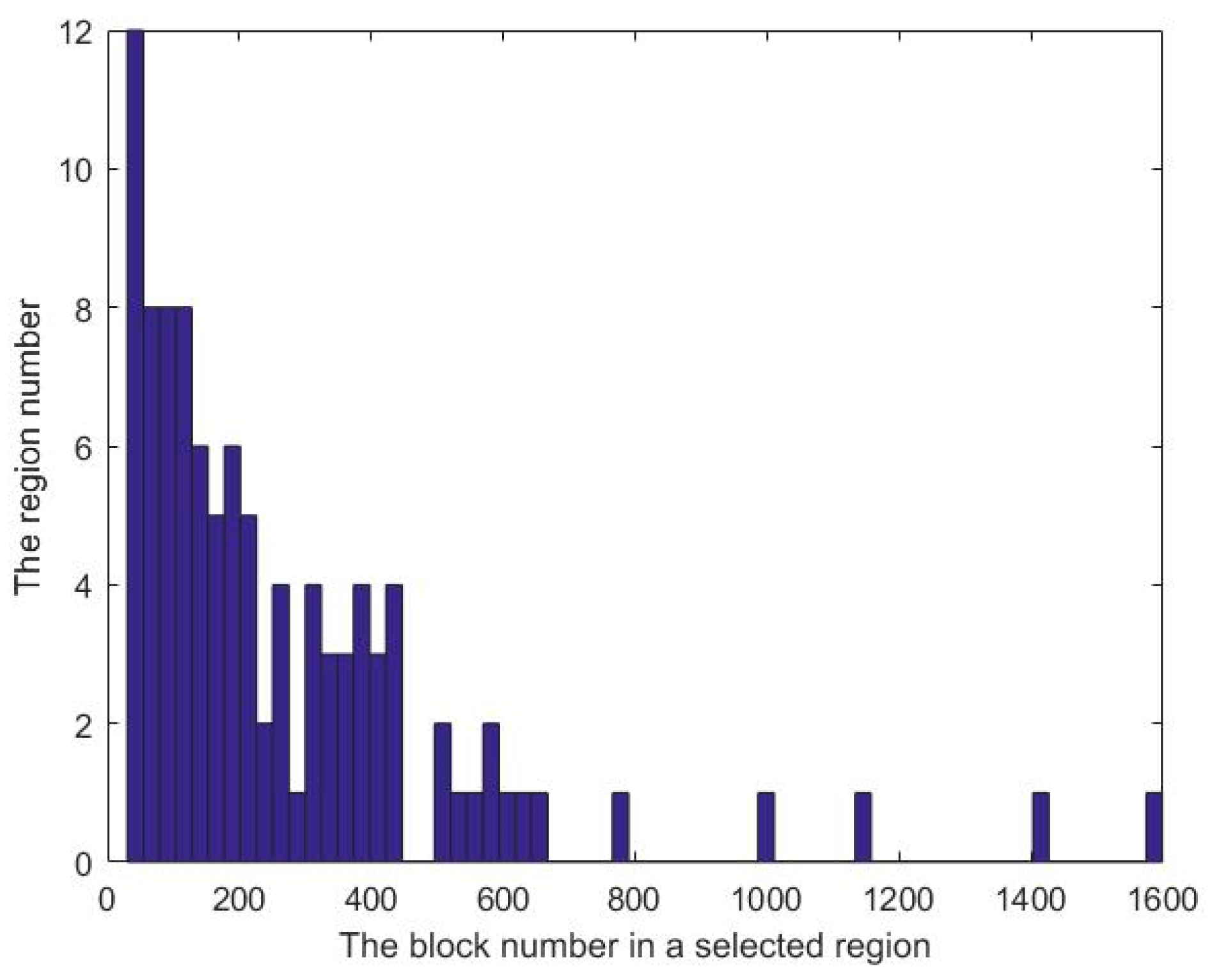
© 2020 by the authors. Licensee MDPI, Basel, Switzerland. This article is an open access article distributed under the terms and conditions of the Creative Commons Attribution (CC BY) license (http://creativecommons.org/licenses/by/4.0/).
Share and Cite
Cao, X.; Huang, Y.; Wu, H.-T.; Cheung, Y.-m. Content and Privacy Protection in JPEG Images by Reversible Visual Transformation. Appl. Sci. 2020, 10, 6776. https://doi.org/10.3390/app10196776
Cao X, Huang Y, Wu H-T, Cheung Y-m. Content and Privacy Protection in JPEG Images by Reversible Visual Transformation. Applied Sciences. 2020; 10(19):6776. https://doi.org/10.3390/app10196776
Chicago/Turabian StyleCao, Xin, Yuxuan Huang, Hao-Tian Wu, and Yiu-ming Cheung. 2020. "Content and Privacy Protection in JPEG Images by Reversible Visual Transformation" Applied Sciences 10, no. 19: 6776. https://doi.org/10.3390/app10196776
APA StyleCao, X., Huang, Y., Wu, H.-T., & Cheung, Y.-m. (2020). Content and Privacy Protection in JPEG Images by Reversible Visual Transformation. Applied Sciences, 10(19), 6776. https://doi.org/10.3390/app10196776





